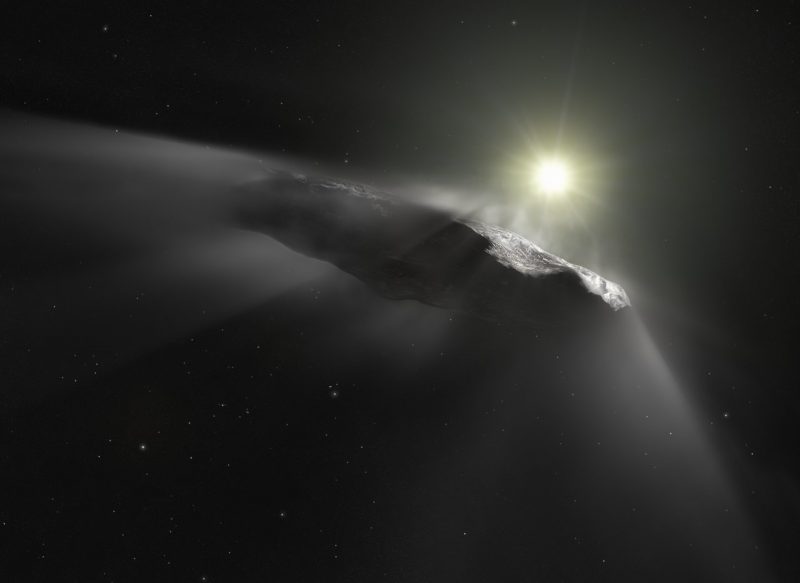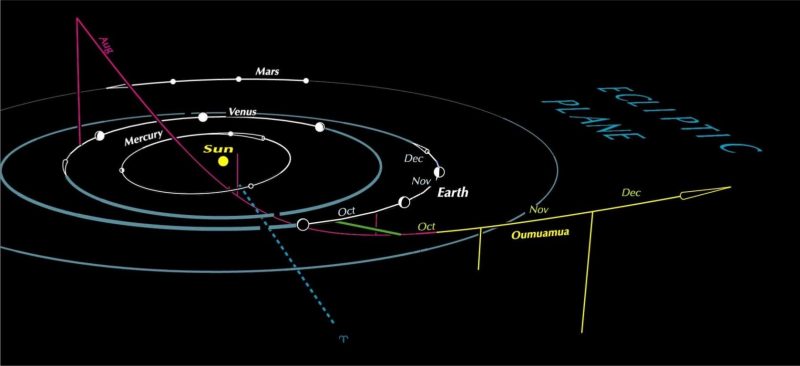
In late 2017, astronomers became aware of an interloper in our solar system, a small asteroid- or comet-like object from another star system. Interstellar objects had been expected, but this object – subsequently named ‘Oumuamua – was the first ever found. Over the past year, studies attempted to reconstruct ‘Oumuamua’s path and thereby learn its home solar system. But, until now, they hadn’t come up with plausible candidates. This week (September 25, 2018), that changed. A team of astronomers at the Max Planck Institute for Astronomy in Germany announced it has tracked ‘Oumuamua to several possible home systems. The team used data from ESA’s Gaia satellite to find four plausible stars where ‘Oumuamua could have begun its journey, more than a million years ago.
Coryn Bailer-Jones of Max Planck led the team that managed to backtrack ‘Oumuamua’s motion and thereby to identify the four candidate stars. All four of them are dwarf stars, not surprising since dwarfs are the most common type of star in our Milky Way galaxy.
Various studies had already suggested that ‘Oumuamua was ejected from its home star’s planetary system during the planet formation phase, when there were many small-sized objects (planetesimals) flying around that interact with giant planets in the system.
The Max Planck team said ‘Oumuamua’s home star is likely to have two key properties. First, tracing back ‘Oumuamua’s orbit should lead directly back to, or at least very close to, the home star. Second, the relative speed of ‘Oumuamua and its home star is likely to be comparatively slow – objects are typically not ejected from their home systems at large speeds. A statement from the institute said:
The one that came closest to ‘Oumuamua, at least about one million years ago, is the reddish dwarf star HIP 3757. It approached within about 1.96 light-years. Given the uncertainties unaccounted for in this reconstruction, that is close enough for ‘Oumuamua to have originated from its planetary system (if the star has one). However, the comparatively large relative speed (around 25 km/s [16 miles/s]) makes it less probable for this to be ‘Oumuamua’s home.
The next candidate, HD 292249, is similar to our sun, was a little bit less close to the object’s trajectory 3.8 million years ago, but with a smaller relative speed of 10 km/s [6 miles/s].
The two additional candidates met ‘Oumuamua 1.1 and 6.3 million years ago, respectively, at intermediate speeds and distances. These stars have been previously catalogued by other surveys, but little is known about them.
All four of these stars remain plausible candidates, these astronomers said, but they also said:
… the smoking gun is still missing. In order to eject ‘Oumuamua at the observed speeds, the home system would have needed to feature a suitable giant planet that could slingshot ‘Oumuamua into the depths of space.
So far, no such planet has been detected around those stars – but since none of the stars have been examined closely for planets so far, that could well change in the future.
Read more from the Max Planck Institute of Astronomy

Bottom line: A team of astronomers at the Max Planck Institute for Astronomy has identified four plausible candidates for ‘Oumuamua’s host star. ‘Oumuamua is the first object from interstellar space known to have passed through our solar system.
Source: Plausible home stars of the interstellar object ‘Oumuamua found in GaiaDR2











